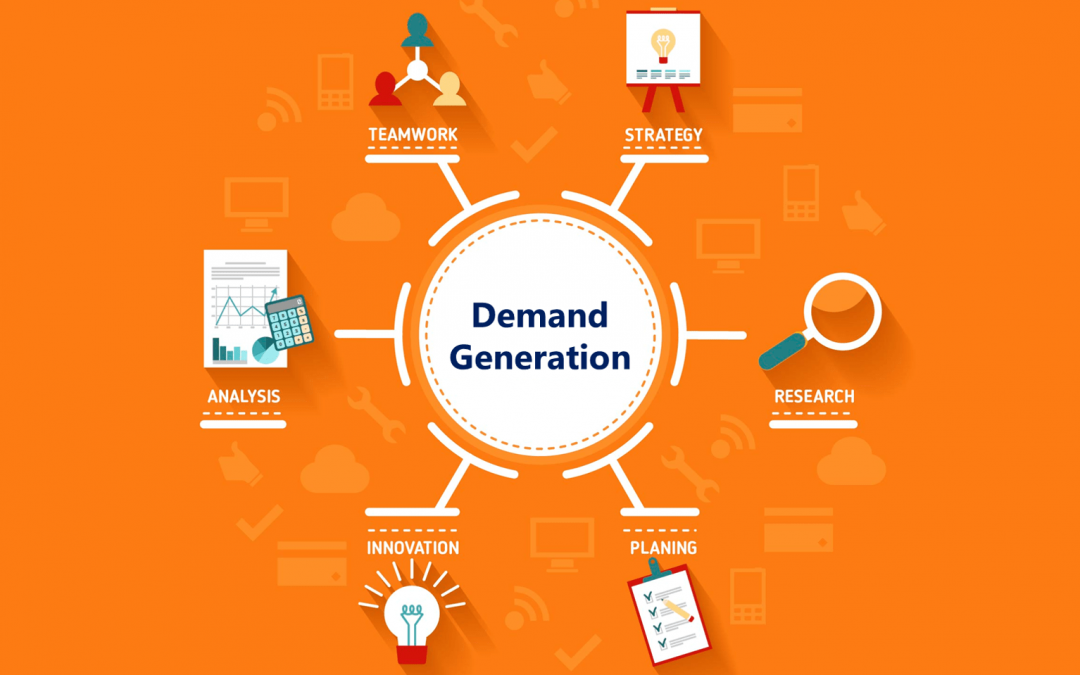
Demand generation marketing is a form of inbound marketing. Often referred to as the marketing funnel or demand gen funnel, it refers to the entire marketing strategy used to create interest in your brand’s product or service.
Demand generation marketing strategies cover the entire customer journey from interest to lead generation. To understand demand generation, consider how your product or service feels to potential customers.
To generate demand, you must identify ways to introduce your brand to a new audience and nurture that relationship by gaining their trust and positioning yourself as an authority.
Demand generation isn’t a one-off activity, and it isn’t something that happens overnight. Instead, it results from a long-term marketing strategy that should incorporate all brand elements. Gaining interest might come easier for some brands, but gaining the trust you need from the public takes time and coordinated marketing efforts.
The primary question is: How much do your customers trust your brand to solve their problems? Getting your brand in front of the public is especially important in B2B demand generation.
Demand generation strategies could range from social media campaigns to thought leadership, depending on your brand’s industry. However, demand generation is mainly about getting the word out about the brand you represent to your potential audience.
The values you represent are essential too, and the end goal is critical to a potential customer to trust your brand enough to become a regular customer. Demand generation can benefit the entire customer journey when generating demand for the product or pursuing qualified leads.
Lead generation vs. demand generation
Before we get to the five benefits of demand generation marketing, let’s clear up the differences between lead gen and demand gen.
Through demand generation, companies can reach out to the public and get their products and services noticed. New audiences can also be reached through it. Lead generation aims to turn prospects into customers by converting them into potential leads.
Demand generation involves fewer transactions than lead generation. Demand generation and lead generation activities in the B2B sales funnel happen at different parts of the marketing funnel. In the sales funnel, the very first step is to create demand. After that, bringing prospects into the buying process is what it’s all about.
The lead generation process begins once the prospects have passed through that stage. Then, to learn more about your brand or product, they exchange their personal information. Using a landing page is a good example here.
Now that we understand demand generation marketing as a concept and the difference between demand generation marketing and lead generation marketing, it’s time to look at the five massive benefits.
1 – Demand Generation Marketing Provides A Clear Direction For Sales And Marketing Efforts
To streamline your marketing efforts, demand generation helps you determine your target audience and your product’s best features. As a result, the marketing and sales teams will work towards the same goals.
This unified direction is essential when planning all marketing activities and allows a targeted and practical approach to the marketing process.
2 – Demand Generation Marketing Increases Brand Awareness And Attracts More Qualified Prospects.
A market with so much competition requires people to know who you are and what sets you apart. Therefore, you are likelier to become a reference in your industry with engaging and helpful content that gets people’s attention.
Building trust and credibility for your business are easy when you create content focused on the needs and challenges of your ideal buyer personas. Your sales team will likely close a deal if the leads are qualified.
3 – Demand Generation Marketing Improves Customer Retention And Expands The Customer Base
A demand generation strategy helps businesses attract new customers by demonstrating how a product or service can benefit them.
In marketing and sales, demand generation helps businesses retain customers. People are more likely to purchase from them again when they understand how their products and services fit into their lives.
4 – Demand Generation Marketing Provides Businesses With A Competitive Edge
Creating demand for a business’s products and services can improve its position within an industry. In addition, through better demand marketing methods, they can also help convert competitors’ customers.
This allows businesses to increase sales and compete effectively with similar brands and service providers in their industry.
5 – Demand Generation Marketing Reduces Costs And Increases Revenue
People are more likely to be interested in what you offer the more they interact with your brand. A better cost-benefit ratio will allow you to get a more significant number of customers for less money, increasing your sales.
Also, customers are acquired at a lower cost, thus maximizing the use of the available resources. Your solution takes less time and requires fewer steps to convince the user.
Demand generation marketing is a vital part of a brand’s marketing strategy. No matter what industry you’re in, the product you sell, or the service you render, you need to ensure that you generate demand for what you have to offer as a brand.





Leave a Reply